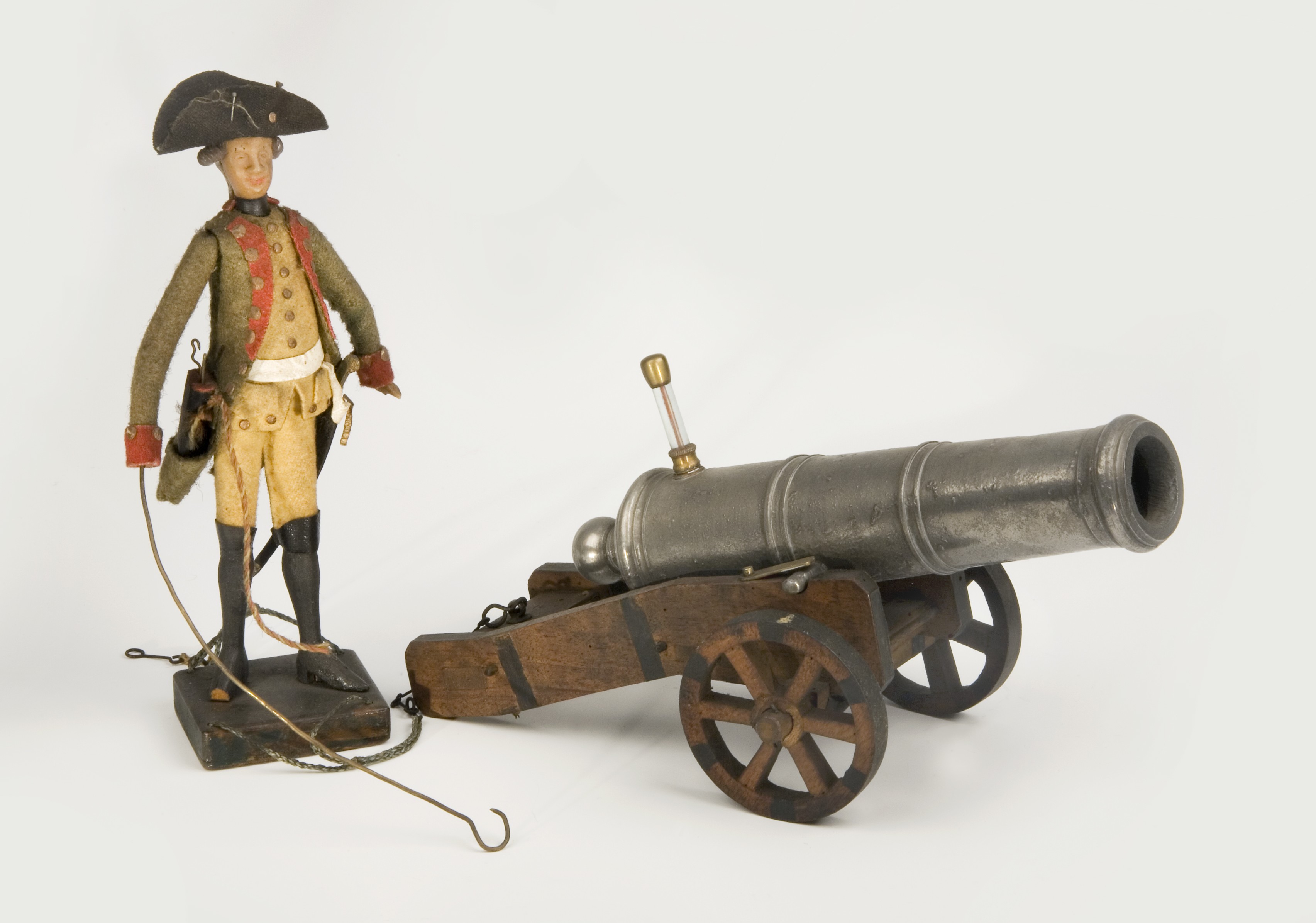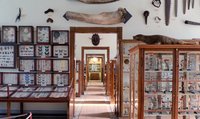Die kleine Puppe in Militäruniform mit Zweispitzhut sieht zwar wie ein Kinderspielzeug aus. Tatsächlich ist sie aber ein komplexes wissenschaftliches Instrument. Gefertigt als elektrisches Schauexperiment verdeutlicht es die Wirkung von elektrischer Spannung. Durch einen Zünddraht war der Kanonier mit einer Elektrisiermaschine verbunden, auch Leidener Flasche genannt. Die elektrische Spannung löste einen Knalleffekt in der Kanone aus. In der Sammlung befindet sich eine Vielzahl von Instrumenten für Demonstrationszwecke. Auch Elektrisiermaschinen haben sich im historischen Naturalienkabinett erhalten. Johann Heinrich Linck d.J. führte diese lehrreichen Experimente selbst in seinen Salons vor.
Gefertigt wurde das Objekt vermutlich in Nürnberg, um 1780. Erhalten sich zudem eine handgeschriebene Gebrauchsanweisung von Johann Heinrich Linck d. J.
en

